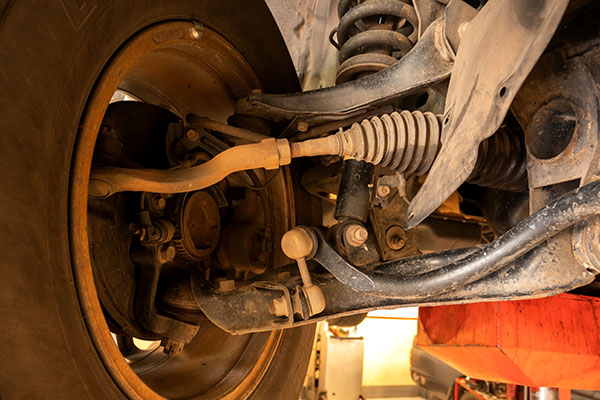
The steering and suspension systems in a vehicle work in tandem to provide control, stability, and a comfortable ride. While they are distinct systems with unique functions, they are interconnected and collaborate to ensure optimal handling and safety. Let's look a little bit more in-depth at this topic because there is quite a lot to dissect and explain - continue reading to find out!
Understanding the Steering System
The steering system, as its name implies, allows the driver to control the direction of the vehicle. It comprises various components, including:
- Steering wheel
- Steering column
- Rack
- Pinion (or steering gear)
- Tie rods
- Steering knuckles
When the driver turns the steering wheel, it transfers the input through the steering column to the rack and pinion, which converts rotational motion into linear motion. The tie rods transmit this linear motion to the steering knuckles, which ultimately steer the wheels.
The Function of the Suspension System
The suspension system, on the other hand, is responsible for managing the vehicle's ride quality, stability, and handling. It consists of the:
- Springs
- Shock absorbers (or dampers)
- Control arms
- Bushings
- Anti-roll bars
The primary function of the suspension system is to absorb and dampen the impact of road irregularities, ensuring the wheels maintain contact with the road surface for improved traction and stability.
How Are These Systems Connected
The connection between the steering and suspension systems lies in their shared objective of optimizing vehicle control and maneuverability. The suspension system's ability to absorb bumps and maintain tire contact with the road surface directly impacts the steering system's effectiveness in providing precise and responsive steering feedback to the driver.
When encountering bumps or uneven road surfaces, the suspension system absorbs the impact and prevents excessive vertical movement of the vehicle body. This minimizes disruptions to the steering system, allowing the driver to maintain control and keep the wheels aligned with the desired direction. A well-functioning suspension system ensures that the steering system's input is accurately transmitted to the wheels, enhancing overall handling and maneuverability.
Suspension Types and Steering Feel
Different suspension designs can have varying effects on steering feel and responsiveness. For example, a traditional independent suspension system, commonly found in many modern vehicles, provides a good balance between comfort and agility. It allows each wheel to move independently, providing a smoother ride and maintaining better tire contact with the road during cornering.
Alternatively, sportier vehicles may utilize a firmer suspension setup, such as a performance-tuned independent suspension or a multi-link suspension system. These setups enhance handling and responsiveness, providing more direct steering feedback to the driver.
Shocks, struts, suspension, and everything in between can be fixed at Austin's Automotive Specialist! Whatever is causing you trouble or a bumpy ride can be fixed at our shop in no time!